Lexus UX Vs Cadillac XT4 Comparison
There was a time when Cadillac called itself the standard of the world, and it wasn’t just marketing puff.
Of course since then loads of new luxury automakers have come along and rained on Cadillac’s parade. But lately, Caddy’s been on a roll with the product resurgence that it had been promising for decades but is finally delivering. The luxury crossover is the new luxury sedan, which means that this is the real battleground for Cadillac’s return. So we’ve put the smallest Cadillac crossover, the XT4, up against one of the latest from the brand that started the luxury crossover market. That means Lexus, and its new UX 200 and UX 250 crossovers.
Get a Quote on a New Lexus UX or Cadillac XT4Cabin Size
These are both small vehicles, but that doesn’t make them equally compact inside. The Cadillac, for example, is just 4.1-inches longer at 181.1-inches total, but manages to fit in 39.5-inches of rear legroom. That’s 6.4 more than the Lexus, or slightly more than the difference between the good seats on the plane and the ones where you’d fit just fine if you could put your legs in the overhead bin. That doesn’t come at the expense of front-seat room either, where the XT4 has two inches more space. It’s also significantly wider, offering 1.9-inches more shoulder space in the front, 2.2 more in the back, and more than two inches of additional headroom both front and rear. If you want a compact footprint and a compact budget, but need first-class levels of space, the XT4 is the clear winner.
Cargo Space
All that would be for nought if the Cadillac had traded all of that cabin space for a tiny boot, but it hasn’t. Blame the sleeker styling that Lexus has gone with here, with a lower roof, tapered greenhouse, and more steeply angled hatch. The UX has just 18.6 cubic feet of cargo space (17.1 for the hybrid) behind the second row, and the very short height between the high load floor and the hatch’s glass means that your cargo is more likely to either make contact or start to block your view. The Cadillac has a wider and taller 22.3 cubic feet, expanding to 48.9 when the seats are folded. Lexus doesn’t publish seats-folded stats, but our eyeballs say the space delta grows between the two.
Interior
Cadillac has done an impressive job of making this, one of its lowest-priced vehicles, feel as premium as its top models. That means using materials that look and feel good on the base trim, and not just the top trims. Of course, the top trims get you more choices, like a multitude of interior colors, but you won’t feel left out on the base model.
SEE ALSO: 2019 Lexus UX Review
Similarly, all XT4s get an 8.0-inch infotainment system screen running the Cadillac User Interface (or CUE) system. Lexus, on the other hand, gives you a door panel that’s a large expanse of hard plastic, with very little to break up the monotony. Similarly, the dash is more awkwardly styled with materials that, again, don’t feel up to the Cadillac’s.
Lexus does give you four different color palette choices of its faux-leather for no additional cost, and seven more that will add different amounts to the price depending on which you pick. The lower trim UXs offer a 7.0-inch infotainment screen operated by the brand’s frustrating remote touchpad, and it looks tiny in the bezel designed for the optional 10.25-inch version. The standard digital instrument cluster does look pleasing, even if it’s a bit small too.
Performance
Lexus offers two powertrains for the UX, the first is a 2.0-liter four badged the UX 200 that makes 169 hp with 151 lb-ft of torque. This one comes only as a front-wheel drive, and it has a CVT with 10 artificial ratios and available paddle-shifters. In this crossover, that’s a bit underpowered, and the CVT delivers with the high revs and drone that those transmissions are known for. The UX 250h boosts power to 181 hp, but, more importantly, comes with loads more torque thanks to the electric motor. It can run solely on battery power, and it uses an electric motor in the rear to provide all-wheel drive at speeds up to 43 mph. If you want a bit more zip in your UX, this is the clear choice.
Cadillac has just one engine offering in the XT4, a 2.0-liter turbo-four that puts out 237 hp with 258 lb-ft of torque. It’s a strong engine that stays mostly silent under the hood of the little crossover, one that makes it much quicker than the UX’s choices. It can be had with front or all-wheel drive, with both backed by the same quick-shifting and smooth nine-speed automatic.
SEE ALSO: 2019 Cadillac XT4 Review
On the road, the XT4 offers a quieter, more solid feeling than the Lexus. Neither offers you exactly what you’d call involving steering feel, but that’s not really a surprise in this segment. Comfort is the priority, and there the XT4 takes the nod.
Fuel Economy
The upside of the smaller Lexus engines is at the pumps, where the gas-only option delivers 29 mpg city, 37 highway. Pick the hybrid model and city fuel economy makes a huge jump to 41 mpg, with highway up slightly to 38. Contrast that to the front-drive version of the XT4 that gets an EPA estimated 24/30 and the all-wheel drive model falling below that at 22/29.
Technology
Despite the small 7.0-inch base model screen, Lexus has finally given the UX Android Auto and Apple CarPlay for 2020, which is a well-overdue upgrade. All UXs also come with the Lexus Safety System 2.0 which adds pre-collision with pedestrian and cyclist detection, radar cruise control, lane tracing, and automatic high beams as well as parking sensors and blind-spot monitoring. Pick the F-Sport model and get a nifty digital dashboard that can scroll the main bezel left and right to show you different info depending on drive mode. A heads-up display gives you the important info without looking down at that dash.
Cadillac, on the other hand, puts many of the best safety bits higher on the options list. The base Luxury trim does get automatic emergency braking with pedestrian detection as well as rear park assist, but for more stuff, you need more cash. Premium Luxury adds blind-spot alerts, rear cross-traffic alerts, and front park assist, but lane guidance, auto high beams, and radar cruise are all on the options list. Add on everything, though, and the XT4 does get more stuff than UX, with things like the rear camera mirror and semi-self-parking. The XT4’s 8.0-inch system comes with both of the phone connectivity features, and Cadillac’s jog-dial interface is much easier to use than the Lexus touchpad. That said, even heated seats are extra on the XT4. Make the winner here Lexus for cramming everything in as standard, or the XT4 if you need to have all the latest tech but aren’t afraid to shell out.
Price
Lexus doesn’t make the UX’s options list a complicated one. The UX starts from $32,300, and you can add $2,000 for the F Sport or $5,200 to get the Luxury trim. On top of that, the only options are LED headlamps, a heated wheel, heads-up display, wireless charging, and rear cross-traffic braking. The UX 250h starts from $34,350, a hybrid F Sport is $36,350, and a hybrid Luxury trim is $39,550. Tick all the boxes and you’re under $44,000.
The Cadillac XT4 starts from $34,795 for the front-driver in Luxury trim, and $37,295 for an all-wheel drive model. Add heated seats for $850, but if you want more luxury and more of the active safety features you need to step up to Premium Luxury or Sport trims, with the AWD versions of those both at $41,795. Tick all the boxes and you’ll end up at a bit over $51,000, making this one better equipped, but also significantly more expensive. So the winner on price depends on exactly what you want and don’t want on yours.
Conclusion
The Cadillac XT4 offers more available tech, a more comfortable ride, a much larger interior, and is better to drive and be driven in. But the Lexus offers massively better fuel economy, especially in hybrid form, and with the lower price can deliver much more value. So we’d pick the Cadillac, but that doesn’t mean you should automatically overlook the Lexus if it better suits your needs.
Evan moved from engineering to automotive journalism 10 years ago (it turns out cars are more interesting than fibreglass pipes), but has been following the auto industry for his entire life. Evan is an award-winning automotive writer and photographer and is the current President of the Automobile Journalists Association of Canada. You'll find him behind his keyboard, behind the wheel, or complaining that tiny sports cars are too small for his XXXL frame.
More by Evan Williams



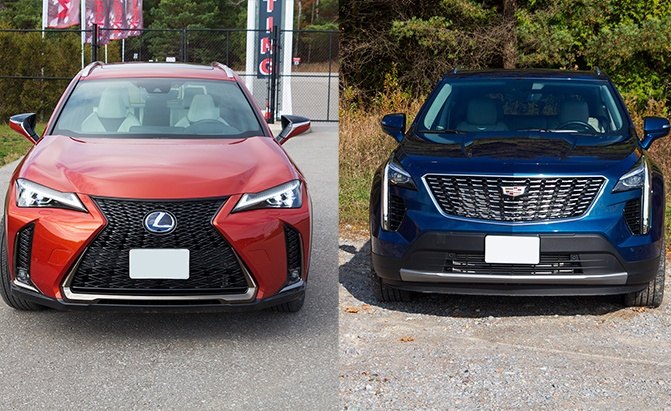






















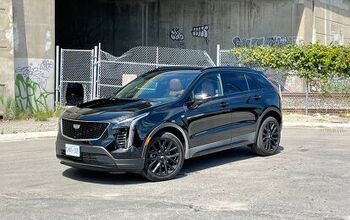
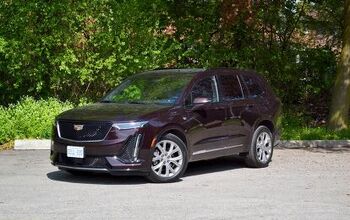
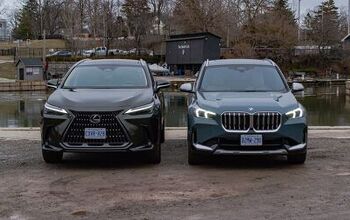
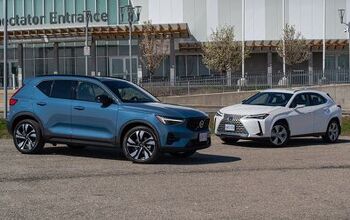
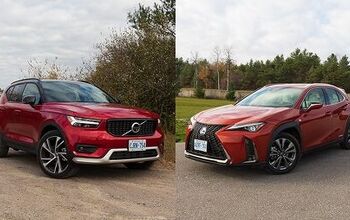












Comments
Join the conversation